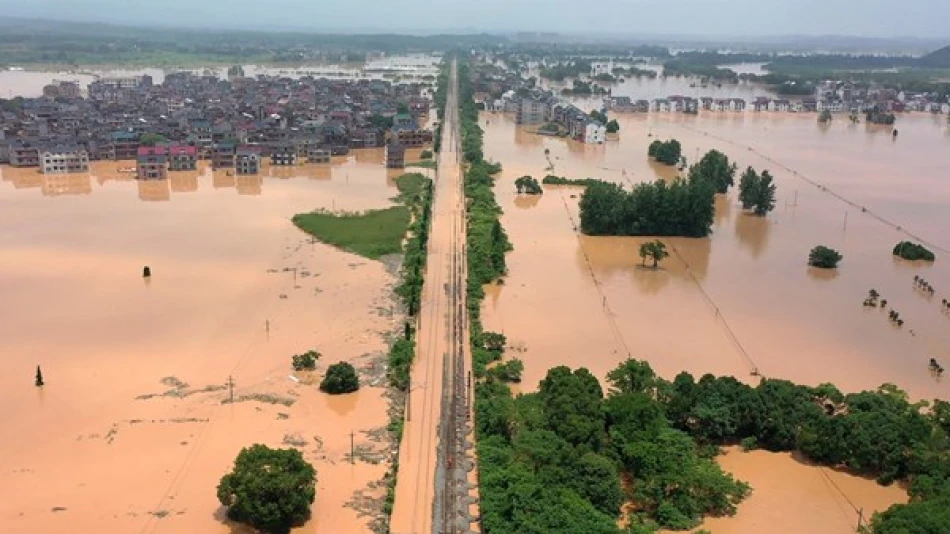
Deadly Floods Devastate China: Casualties Mount as Heavy Rains Wreak Havoc
Northwest China Faces Deadly Flooding Crisis as Death Toll Mounts in Gansu Province
At least 10 people have died and 33 remain missing following severe flooding in China's northwestern Gansu Province, highlighting the country's ongoing struggle with extreme weather events that have intensified in recent years. The disaster underscores China's vulnerability to climate-related emergencies despite massive infrastructure investments aimed at flood control.
Torrential Rains Trigger Fatal Flooding
State broadcaster CCTV reported that continuous heavy rainfall beginning August 7 triggered devastating floods across the mountainous province. By 3:30 PM local time on August 8, rescue teams were still searching for the 33 missing individuals as floodwaters continued to pose risks to affected communities.
Gansu Province, characterized by its arid climate and mountainous terrain, is particularly susceptible to flash flooding when sudden downpours overwhelm the region's limited drainage capacity. The province's geography creates dangerous conditions where water rapidly accumulates in valleys and low-lying areas.
China's Growing Weather Emergency Challenge
Pattern of Extreme Weather Events
This latest disaster fits into a troubling pattern of severe weather events across China in 2024. The country has experienced record-breaking heatwaves, devastating typhoons, and unprecedented rainfall that have collectively caused billions in economic damage and hundreds of casualties.
China's meteorological authorities have increasingly warned of more frequent extreme weather events, linking them to broader climate change patterns affecting the region. The government has invested heavily in early warning systems and flood control infrastructure, yet remote provinces like Gansu remain vulnerable.
Economic and Social Impact
Beyond the immediate human tragedy, flooding in China's western provinces typically disrupts critical supply chains and agricultural production. Gansu serves as a key corridor for China's Belt and Road Initiative, with major transportation routes connecting the province to Central Asia potentially affected by severe weather events.
The economic implications extend beyond local damage, as insurance companies and government disaster relief funds face mounting pressure from increasingly frequent natural disasters. China's National Disaster Reduction Commission has allocated increasing resources to emergency response, but the scale of recent weather events tests these systems.
Regional Preparedness and Response
Chinese authorities have deployed emergency response teams and evacuation procedures, though the effectiveness of these measures in remote, mountainous areas remains limited by geography and infrastructure constraints. The search and rescue operations for the 33 missing individuals will likely continue for several days, depending on weather conditions and terrain accessibility.
This incident reinforces the urgent need for enhanced early warning systems and community preparedness in China's western provinces, where sparse populations and challenging terrain complicate emergency response efforts. The tragedy serves as a stark reminder of the human cost of extreme weather events in an era of climate uncertainty.
Most Viewed News

 Layla Al Mansoori
Layla Al Mansoori






